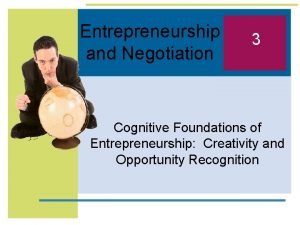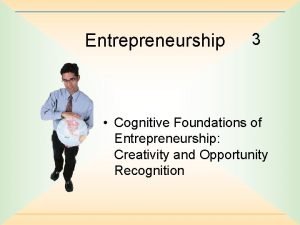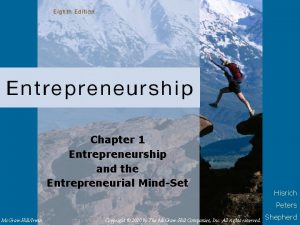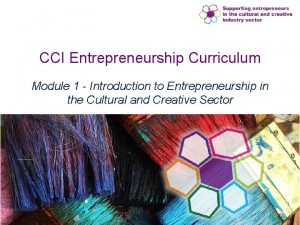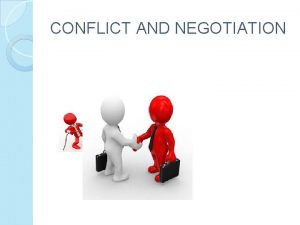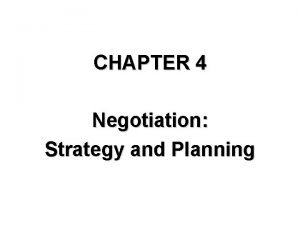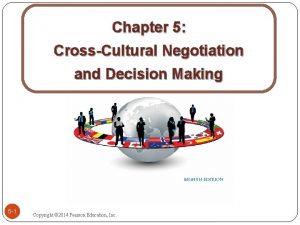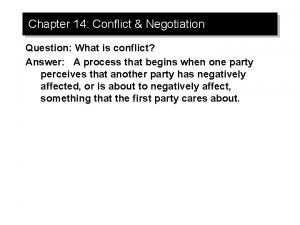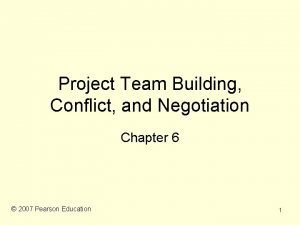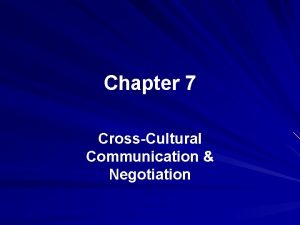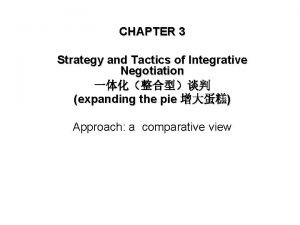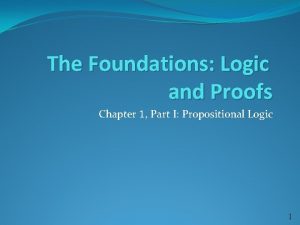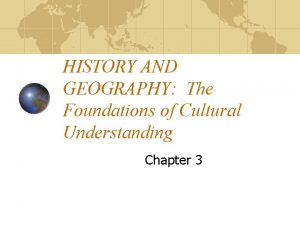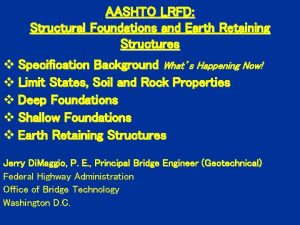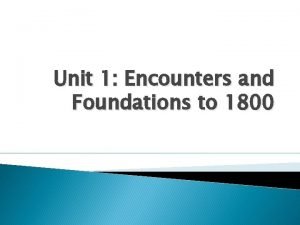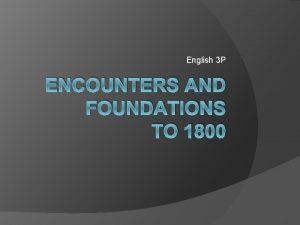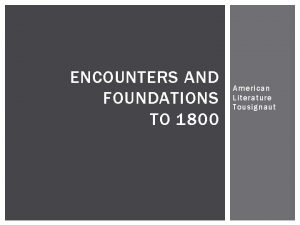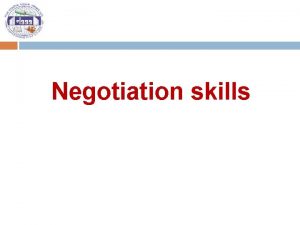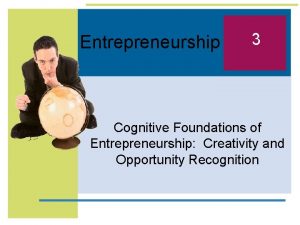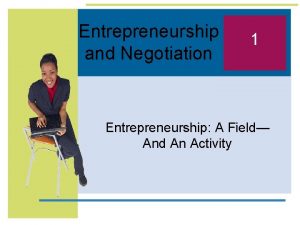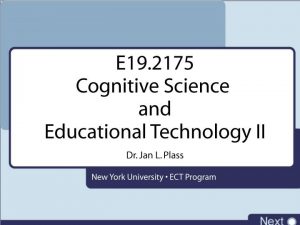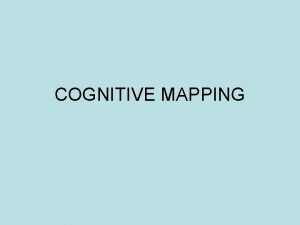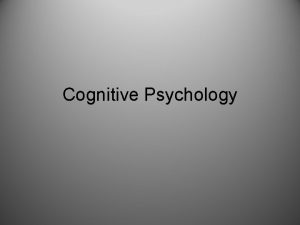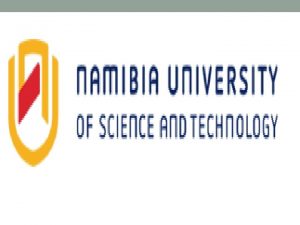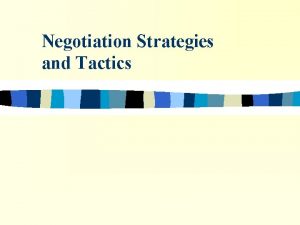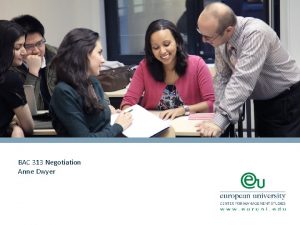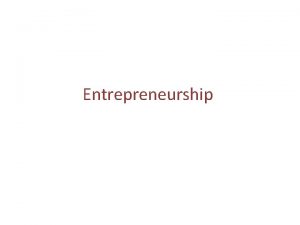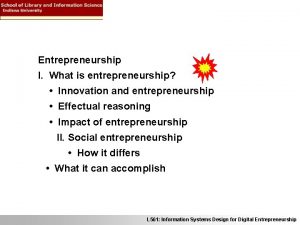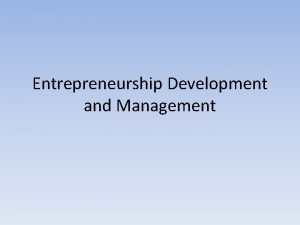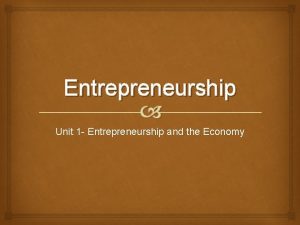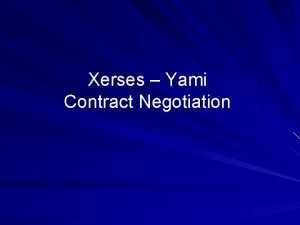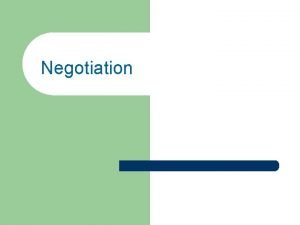Entrepreneurship and Negotiation 3 Cognitive Foundations of Entrepreneurship



























- Slides: 27

Entrepreneurship and Negotiation 3 Cognitive Foundations of Entrepreneurship: Creativity and Opportunity Recognition

“When written in Chinese the word crisis is composed of two characters. One represents danger and the other represents opportunity. ” --John F. Kennedy, 1959 Chinese character wēi Chinese character jī (in simplified form) 3 -2

Why are some successful? Opportunities Individuals 3 -3

Right Person, Right Place, Right Time • Better access to crucial information —information helpful in recognizing opportunities or formulating new ideas • Better able to utilize information—to combine it or interpret in ways that reveal the opportunities overlooked by others 3 -4

Three Key Processes • Idea generation • Creativity • Opportunity recognition 3 -5

A Cognitive Perspective • • Human cognition—the mental processes through which we Acquire information Enter it into storage Transform it Use it to accomplish a wide range of tasks 3 -6

Ideas Occur when individuals use existing knowledge they have gained (and retained) from their experience to generate something new—thoughts they did not have before. 3 -7

The Raw Materials The raw materials for new ideas and for recognizing opportunities are present in the cognitive systems of specific persons as a result of their life experience. Unique experience Knowledge Idea generation 3 -8

Memory • Working memory—holds limited amount of information for brief periods • Long-term memory—retains vast amounts of information for long periods • Procedural memory—automatic knowledge gained through practice 3 -9

Mental Frameworks Mental scaffolds help us to understand new information and to integrate it (often in original ways)— with information we already possess 3 -10

Types of Frameworks • Schemas—cognitive frameworks representing our knowledge and assumptions about specific aspects of the world • § Example • self-schema • I am a Japanese (self-identity) • I am a wife (a role I play) § person-schema § George Bush is American (identity) § He is the American president (a role he plays) Prototypes—abstract, idealized mental representations that capture the essence of a category of objects • • Many or most instances possess each characteristic features e. g. the ability to fly is typical of birds, but it is not a defining feature of a bird (ostrich can not fly) 3 -11

Example of Prototypes Divide the following items into the category of fruits and the category of vegetables: apples, carrots, tomatoes, cauliflower, oranges, pumpkin, cucumber 3 -12

Mental Shortcuts • Heuristics—simple rules for making complex decisions or drawing inferences in a rapid and seemingly effortless manner • Availability heuristic—the more easily we bring information to mind, the more importance we assign to it If you can't find a solution, change the rules. Comment: Remember that there are no no-win scenarios. 3 -13

Mental Shortcuts (cont) When you have several things you could be doing and don't know which to do: Just do any one of them! Comments: If you cannot decide between two or more possibilities, then there is a good chance that the differences don't matter. However, most people begin to hesitate in this kind of situation. If you are conscious of this, you can just choose one choice randomly or according to some standard method. 3 -14

Thinking “Tilts” • Optimistic bias—expect things to turn out well without basis • Confirmation bias—notice, process, and remember information that confirms current beliefs • Illusion of control—assume that our fate is under our control 3 -15

Creativity Items or ideas produced are both • Original and unexpected • Appropriate or useful 3 -16

Concepts • Building blocks of creativity • Internal mental structures developed to organize information • Categories for objects or events that are somehow similar to each other in certain respects 3 -17

“An old thing becomes new if you detach it from what usually surrounds it. ” --Robert Bresson 3 -18

Human Intelligence • • • Individuals’ abilities to Understand complex ideas Adapt effectively to the world Learn from experience Engage in various forms of reasoning Overcome a wide range of obstacles 3 -19

Kinds of Intelligence • • • Analytic intelligence Creative intelligence Practical intelligence Social intelligence Successful intelligence 3 -20

Successful Intelligence Practical Intelligence Analytic Intelligence Successful Intelligence Success Creative Intelligence 3 -21

Confluence Approach • • • Creativity emerges from a confluence of Intellectual abilities Broad, rich knowledge base Appropriate style of thinking Personality attributes Intrinsic, task-focused motivation Environment supportive of creative ideas 3 -22

Broad, Rich Knowledge Base • Having varied work experience • Having lived in many different places • Having a broad social network 3 -23

Opportunity Recognition Some people are more likely to recognize opportunities because • They have better access to certain kinds of information • They are able to utilize the information once they have it 3 -24

Superior Utilization of Information • Richer and better-integrated stores of knowledge • Higher in intelligence • Higher in practical intelligence • Higher in creativity 3 -25

Regulatory Focus Theory • Promotion focus—attain positive outcomes • Prevention focus—avoid negative outcomes • Successful entrepreneurs adopt a mixture of these two perspectives 3 -27

Increasing Opportunity Recognition • • Build a broad, rich knowledge base Organize your knowledge Increase your access to information Create connections between the knowledge you have • Build your practical intelligence • Temper eagerness for hits with wariness of false alarms 3 -28
 Cognitive foundations of entrepreneurship
Cognitive foundations of entrepreneurship Cognitive foundations of entrepreneurship
Cognitive foundations of entrepreneurship Cognitive and non cognitive religious language
Cognitive and non cognitive religious language Cognitive adaptability in entrepreneurship examples
Cognitive adaptability in entrepreneurship examples Introduction to entrepreneurship module pdf
Introduction to entrepreneurship module pdf Conflict and negotiation
Conflict and negotiation Finding and using negotiation power
Finding and using negotiation power Negotiation strategy and planning
Negotiation strategy and planning Conflict and negotiation in the workplace
Conflict and negotiation in the workplace Cross cultural communication and negotiation
Cross cultural communication and negotiation Cross cultural negotiation and decision making
Cross cultural negotiation and decision making Integrative vs distributive negotiation
Integrative vs distributive negotiation Project team building conflict and negotiation
Project team building conflict and negotiation Conflict management and negotiation skills
Conflict management and negotiation skills Cross cultural communication in business negotiations
Cross cultural communication in business negotiations Strategy and tactics of integrative negotiation
Strategy and tactics of integrative negotiation The foundations logic and proofs
The foundations logic and proofs History and geography the foundations of culture
History and geography the foundations of culture Aohs foundations of anatomy and physiology 1
Aohs foundations of anatomy and physiology 1 Aohs foundations of anatomy and physiology 1
Aohs foundations of anatomy and physiology 1 Foundations and earth retaining structures
Foundations and earth retaining structures Encounters and foundations to 1800
Encounters and foundations to 1800 Mathematical foundations of computer graphics and vision
Mathematical foundations of computer graphics and vision Pencounters
Pencounters Encounters and foundations to 1800
Encounters and foundations to 1800 Aohs foundations of anatomy and physiology 1
Aohs foundations of anatomy and physiology 1 Aohs foundations of anatomy and physiology 1
Aohs foundations of anatomy and physiology 1
